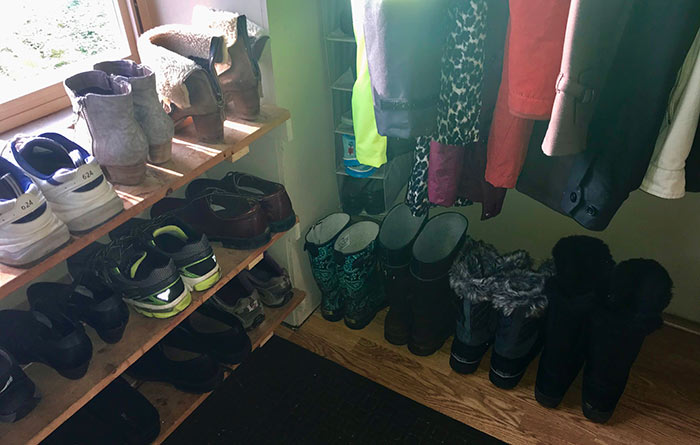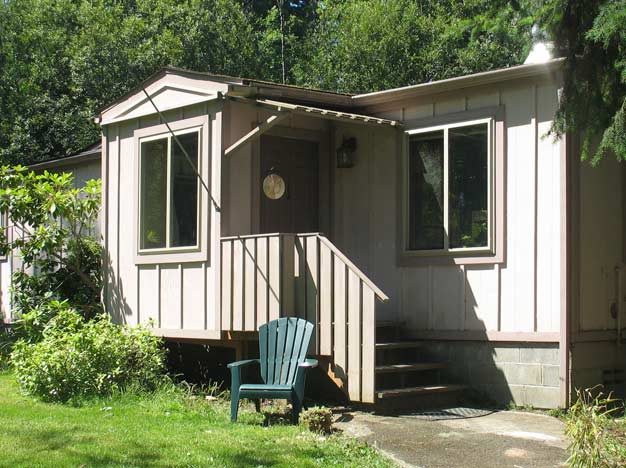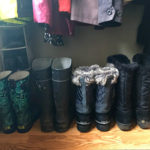Ever since I came to America in 1998 I have wondered why most houses don’t have a proper mudroom. The front door often leads straight into the living room or kitchen, where there’s no place to hang coats or leave boots.
The Norwegian word for mudroom is vindfang. Directly translated it means something like “wind catcher.” Indeed, one of the most important functions of this room is to prevent the wind and cold from getting into the house and letting the heat out. Even an unheated vindfang functions as a buffer between the warm inside and cold outside and helps reduce the heat loss when you open the front door.

When planning a new home, I encourage my clients to make a welcoming, functional entrance or mudroom. If you are remodeling your house you can sometimes create a mudroom within the existing house or you might have to add it on.
Growing up in Norway we all learned to take off our shoes before entering a house, so we wouldn’t drag in dirt, rain, or snow. Every house has a mudroom where you leave your coat and take off your shoes. It’s also the place to hang the dog leash, leave hats and mittens, or bicycle helmets and soccer balls.
Many houses I have visited here in the U.S. have a formal entrance that leads into the living room for guests, and a back entrance — often into the laundry room — that the people living there use every day.

In this mudroom on Vashon, Island, Wash., we enclosed the existing open porch to created a small but efficient mudroom with storage space for boots and coats, with additional storage for toys and outdoor equipment.
I believe that coming and going from your home should be a nice experience for everyone, including the family that lives there. The entrance should be a nice, welcoming place for you to come home to, and a nice place for you to leave from. The laundry room isn’t this place!
The first thing we did after buying our house was to enclose the open front porch and create a small mudroom. Even though it’s only 45 square feet, we have room there for frisbees and rackets, helmets and umbrellas, in addition to all our coats, shoes and boots. Ideally, I would have wanted it to be big enough for a bench too, but it’s still better than not having a mudroom at all. It makes a big difference in the winter to help prevent heat loss, and every time I sweep the floor and get a pile of leaves or sand I’m grateful that it all hadn’t been dragged into our house.
When planning a new home, I encourage my clients to make a welcoming, functional entrance or mudroom. If you are remodeling your house you can sometimes create a mudroom within the existing house or you might have to add it on. If neither of these are possible, creating an entrance zone right by the front door is also nice. All you need is a coat rack of some kind and a place to keep shoes. A tiled floor — where wet boots don’t hurt the wood floor or carpet — can help to mark the transition between outside and inside.
Even if you’re not in the habit of taking your shoes off when you come home, all of us have more than one pair of shoes we use on a regular basis, and it’s nice to have a dedicated spot for them. The same goes for coats and jackets.
The word “mudroom” makes this room sound rather messy or dirty, but whatever you call it – mudroom, entrance, foyer or vindfang — this space can be planned and made into a welcoming, tidy and comfortable room where everything has its dedicated spot and everyone feels welcomed and cared for when entering. You can make it feel more or less formal depending on your preferences, make it big or small depending on the situation and your budget while still gaining the benefits this great room provides.
